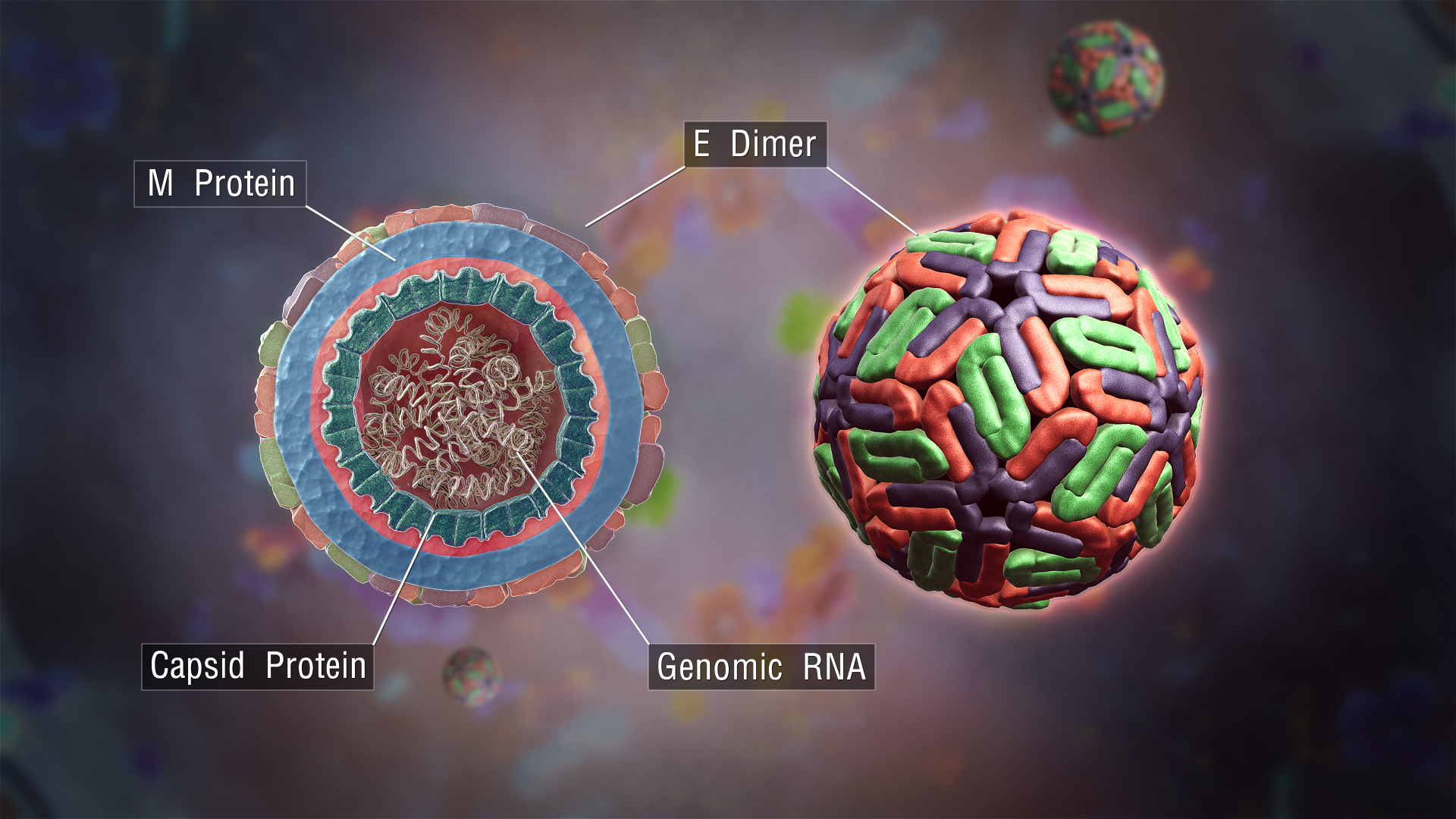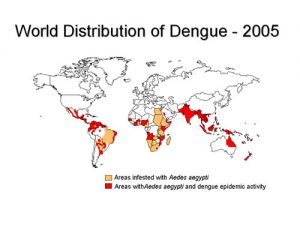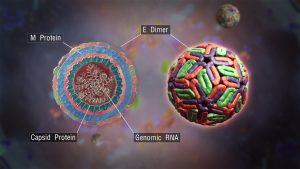Warning for those who suddenly begin to feel fatigued, nauseous, and sport a severe headache! This is a warning sign that the mosquito bites you received on your trip through a tropical region a few months ago may have introduced a deadly virus into your body. At this point, you could be infected with Dengue fever virus.

A map detailing the prevalence of Dengue virus back in 2005. From Wikimedia.
According to an article published by Anne Gubler in Trends in Microbiology, Dengue fever virus originated from the tropical regions of the Earth during the 18th to 19th centuries. The virus is mainly spread through a species of mosquito, referred to as Aedes aegypti, which still populate the tropical and some subtropical regions today. However, as human population continues to increase in these areas, the risk for another epidemic outbreak increases. This is due to the ease at which a mosquito can travel from host to host, spreading the virus at a much higher speed. Recently, outbreaks of Dengue have intensified in all tropical regions resulting in an increase of reported infections and deaths. This makes me extremely cautious of visiting countries that are infested with mosquitos carrying Dengue and I’d like to spread some information about what it is.
 General cross-section view of a Dengue virus. From Wikimedia.
General cross-section view of a Dengue virus. From Wikimedia.
The structure of a Dengue virus consists of a core, an envelope, and proteins attached to it. The core contains the genetic information of the Dengue virus. This genetic information codes for the production of a new virus as well as the creation of a new core, envelope, and envelope proteins. The viral envelope can fuse with the outside of a human cell, and also allows for the attachment of proteins. The envelope proteins are used to attach the virus to the outside layer of a human cell.
A study done by Karen Clyde sheds light on how the virus uses a replication cycle that involves entering a healthy human cell and hijacking numerous cell processes to complete replication. First the virus attaches to a human cell using proteins on the outside. Then the human cell brings the virus into its body, resulting in the release of the virus inside the cell. The next step involves the formation of a structure for reproducing the virus using materials found in the human cell. Finally, this produces a chain of viral proteins which are broken apart to form the final product of a core surrounded by an envelope with proteins.
In my opinion, travelling through a foreign country and having to be constantly aware of mosquitoes is annoying, but well worth the effort. Next time you travel through a country at risk of Dengue infection, make sure to coat yourself in bug repellent. As there are no known vaccines or treatments for Dengue, once infected, it will accompany you for the rest of your life. Therefore it is up to you to take appropriate precautionary measures to protect yourself.


